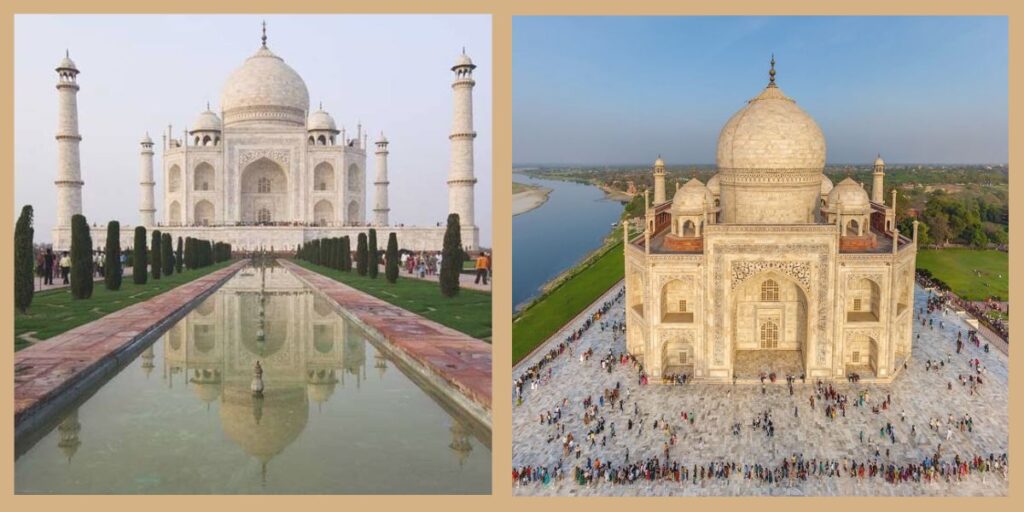UNESCO World Heritage Sites represent the pinnacle of humanity’s natural and cultural treasures. These sites are recognized for their outstanding universal value, and visiting them offers a unique glimpse into our planet’s history, culture, and natural beauty. Top 10 UNESCO World Heritage Sites stand out for their significance and allure.
The Great Wall of China (China)
Stretching over 13,000 miles, the Great Wall of China is an architectural marvel and a testament to human ingenuity and perseverance. Originally constructed to protect Chinese states from invasions, the wall spans deserts, mountains, and plateaus, offering breathtaking views and a profound sense of history. Walking along its ancient paths, visitors can imagine the centuries of labor and effort that went into building this colossal structure.
Machu Picchu (Peru)
Nestled high in the Andes Mountains, Machu Picchu is an iconic symbol of the Inca Empire. This 15th-century citadel is renowned for its sophisticated dry-stone construction and panoramic views of the surrounding landscape. Often shrouded in mist, Machu Picchu’s mystical ambiance transports visitors to a civilization known for its architectural prowess and deep connection to nature.
The Pyramids of Giza (Egypt)
The Pyramids of Giza, including the Great Pyramid, are among the most recognizable structures in the world. These ancient tombs, built over 4,500 years ago, continue to captivate archaeologists and tourists alike. The precision and skill involved in their construction remain subjects of fascination and debate. Standing before these monumental edifices, one can sense the grandeur and mystery of ancient Egypt.
The Colosseum (Italy)
Rome’s Colosseum is a symbol of the ancient Roman Empire’s architectural and engineering prowess. This massive amphitheater, capable of holding up to 80,000 spectators, hosted gladiatorial contests, public spectacles, and dramas. Despite the ravages of time, the Colosseum stands as a testament to Roman innovation and cultural life, drawing millions of visitors each year who marvel at its grandeur and historical significance.
The Taj Mahal (India)
The Taj Mahal often referred to as a “teardrop on the cheek of time,” is a masterpiece of Mughal architecture. Built by Emperor Shah Jahan in memory of his beloved wife Mumtaz Mahal, this white marble mausoleum is renowned for its symmetrical beauty, intricate carvings, and stunning gardens. The Taj Mahal’s ethereal beauty, especially under the moonlight, leaves a lasting impression on all who visit.
Angkor Wat (Cambodia)
Angkor Wat is the largest religious monument in the world and a crowning achievement of the Khmer Empire. This temple complex, originally dedicated to the Hindu god Vishnu, was later transformed into a Buddhist site. Its intricate bas-reliefs and towering spires reflect the zenith of Khmer architectural genius. Exploring Angkor Wat, visitors can immerse themselves in the spiritual and historical legacy of Southeast Asia.
The Galápagos Islands (Ecuador)
The Galápagos Islands are a living laboratory of evolution and biodiversity. Located in the Pacific Ocean, these volcanic islands are home to a plethora of unique species, including giant tortoises, marine iguanas, and blue-footed boobies. Charles Darwin’s observations here significantly contributed to his theory of natural selection. Today, the Galápagos Islands are a haven for nature enthusiasts and scientists alike, offering an unparalleled opportunity to witness evolution in action.
Petra (Jordan)
Petra, known as the “Rose City” due to the color of its rock-cut architecture, is an archaeological wonder. This ancient city, carved into pink sandstone cliffs, was the capital of the Nabataean Kingdom. Key attractions include the Treasury, the Monastery, and the Amphitheatre. Petra’s unique blend of natural beauty and human ingenuity makes it a mesmerizing destination for history buffs and adventurers.
The Acropolis (Greece)
The Acropolis of Athens is a symbol of classical Greek civilization and its contributions to art, philosophy, and democracy. Dominating the city skyline, the Acropolis features several ancient structures, including the Parthenon, the Erechtheion, and the Temple of Athena Nike. These architectural masterpieces exemplify the artistic and cultural achievements of ancient Greece, drawing millions of visitors who seek to connect with the roots of Western civilization.
Yellowstone National Park (USA)
Yellowstone National Park, the first national park in the world, is a geological and ecological treasure. Spanning three states, it boasts a diverse range of natural features, including geysers, hot springs, waterfalls, and an abundance of wildlife. The park’s geothermal wonders, such as the iconic Old Faithful geyser and the vibrant Grand Prismatic Spring, highlight the dynamic forces shaping our planet. Yellowstone’s pristine landscapes and rich biodiversity make it a must-visit for nature lovers.
Conclusion:
Visiting UNESCO World Heritage Sites offers a profound appreciation of our world’s cultural and natural heritage. Each site on this list provides a unique window into humanity’s past and the extraordinary beauty of our planet. Whether you are drawn to ancient civilizations, architectural marvels, or natural wonders. These top 10 UNESCO World Heritage Sites promise an unforgettable journey through time and nature.







